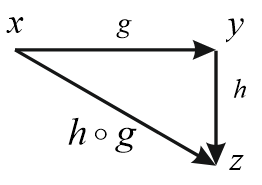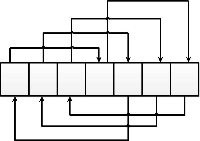Burnside’s lemma. Poya’s theorem
Let there be a set
Definition. Group operates on many
if
and
element action defined
per element
(denoted
having the following properties:
done
done
.
Example 1 .
For elements where
– action,
.
Example 2. Action composition

Example 3 Vector rotation on the corner
counterclock-wise [0, 2\pi), + \text{ mod} 2\pi \}.” alt=”G = \{ [0, 2\pi), + \text{ mod} 2\pi \}.” src=”https://habrastorage.org/getpro/habr/upload_files/c48/928/ce5/c48928ce5827260038895b32fc3b7377.svg” width=”203″ height=”22″/>

Пример 4. (упорядоченные наборы из нулей и единиц длиной
.
Группа перестановок с операцией композиции.
Пример 5. Пусть(упорядоченные числовые наборы – массивы чисел), группа циклических сдвигов
Обратный элемент к элементу вычисляется следующим образом:

Классы эквивалентности (орбиты)
Определение. Пусть группа действует на множество
Тогда орбитой элемента
называется множество:
Множество всех орбит обозначается так:
Пример 1. Множество – числовые массивы длиной
.
– группа перестановок длины

Пример 2. циклический сдвиг массива длиной
Пример 3. – размещения из
по
– перестановки
элементов. Классами эквивалентности в данном случае будут сочетания из
по
Пример 4. Группа поворотовaffects many
Orbits (equivalence classes) in this case are concentric circles.

fixed point
Definition. Let the group affects many
fixed point for element
such an element is called
for which
Definition. Let a finite group operates on many
For element
its stabilizers (in the group
) is a subset of elements of the group
leaving it (element
) in place.
Example 1 Multiplication of coordinates of a point in a plane to a constant.
If then
performed
If then
And this point
Example 2 Consider an array consisting of 5 numbers and some permutation to it:

How to find the number of fixed points in an arbitrary permutation?
The permutation is divided into cycles.
In each cycle, the elements must be equal (the same).
Between cycles, elements can be correlated arbitrarily. The number of cycles is


Burnside lemma
Theorem. The number of orbits is equal to the average power of the stabilizer of the elements of the group
Example.





